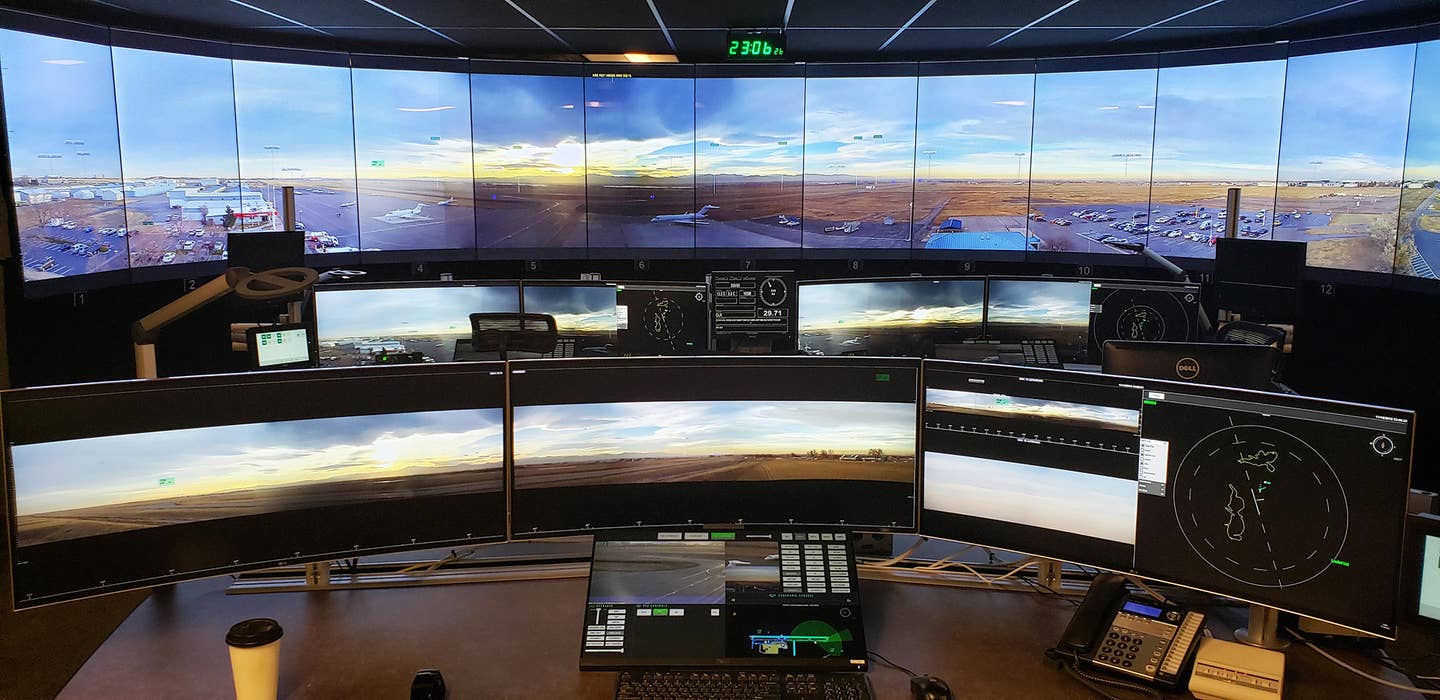
A view of the Remote Tower facility from a Controller workstation. Searidge Technologies
Pilots who are used to flying into Northern Colorado Regional Airport (KFNL) near Fort Collins/Loveland—and operating there like they would at any non-towered airport—will need to take careful note of major air traffic control changes coming soon to the airport. Beginning in mid-March, KFNL becomes a “towered” airport with the addition of a mobile ATC trailer (MATCT) providing on-site services. The trailer and local controllers will eventually give way to a remote ATC facility as part of a test being conducted at the airport.
Initially, local controllers in the trailer will handle the traffic, while evaluators employed by Searidge Technologies of Ottawa, Ontario, will conduct “passive” operations from a remote facility. This summer and fall, a second phase of testing begins when ATC services will be provided by the remote tower, with local controllers in the MATCT acting as back-up. As testing progresses, full-time ATC services will eventually be through the remote tower only as Searidge pursues certification of the technology from FAA.
According to the Colorado Department of Transportation, the Colorado Remote Tower Project is a “first of its kind” design that integrates both satellite-based aircraft surveillance technology with ground-based video technology. For the tests to be conducted at KFNL, there will be three 360-degree panoramic video and static cameras securely mounted atop steel masts that will rise between 22 and 56 feet above the ground, simulating the same view one would expect if looking from a physical air traffic control tower. The camera and satellite-based surveillance data will then be fed to a remotely-located control center. During the test and assessment phase of this project, the control room will reside on airport property, but will accurately simulate a remote scenario. Future control centers can be located from a remote location.
KFNL was chosen as the test airport for the Colorado Remote Tower Project after a thorough site selection process in 2015 conducted in collaboration with FAA’s Nextgen office. The airport is jointly owned and operated by the cities of Fort Collins and Loveland and sees approximately 85,000 to 95,000 takeoffs and landings per year. A total of nearly 265 aircraft are based at the airport, which serves users ranging from privately-owned aircraft, commercial airliners, military aircraft, pilot training, and helicopters. The airport is home to three flight schools, specialized aircraft maintenance services, and a 24/7 fixed base operator (FBO)
In July of 2017, following significant efforts to develop the project requirements and scope, the FAA selected Searidge Technologies to design, install, test, and certify the remote tower equipment being tested at KFNL. Other partners in the project include William E. Payne & Associates, FAA, National Air Traffic Controllers Association, Northern Colorado Regional Airport administration, and the Colorado Division of Aeronautics.
Northern Colorado is one of the most rapidly developing regions of the state, according to CODOT, with the Colorado Division of Local Affairs and State Demography Office projecting that populations for the area are expected to more than double by the year 2050. “A growing population of this magnitude will result in increased demand for all modes of transportation, including air transportation. The Colorado Remote Tower Project is a proactive measure designed to address the future increase in aircraft operations at KFNL with dramatically reduced costs compared to constructing, maintaining and staffing a physical air traffic control tower,” CODOT said.
The mobile tower’s hours of operation will be 8 a.m. to 6 p.m. local time effective March 16, handling traffic on 118.4 MHz. Other frequencies include 121.65 MHz for ground, 135.075 MHz for ATIS, and 122.95 MHz for unicom. The common traffic advisory frequency (CTAF) of 122.7 MHz will be eliminated when ATC services begin being provided by local controllers in the MATCT.

Subscribe to Our Newsletter
Get the latest FLYING stories delivered directly to your inbox






